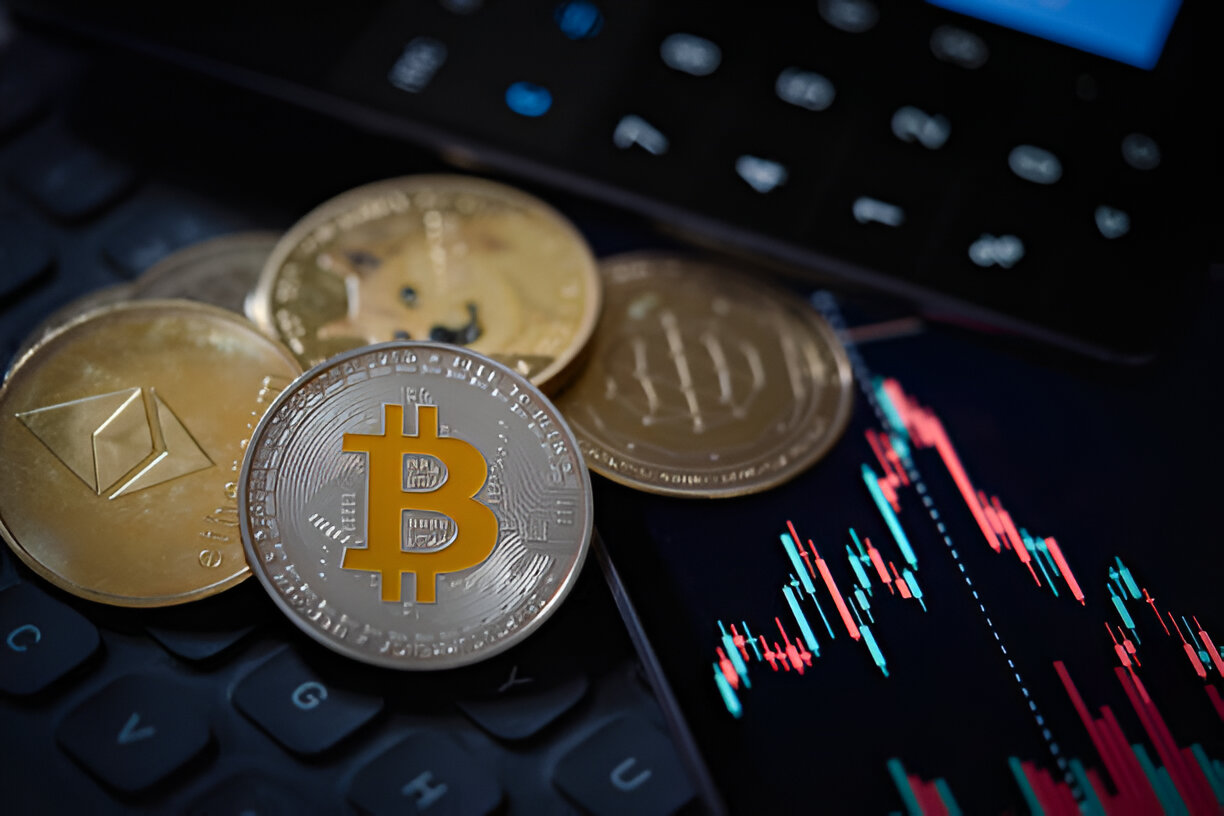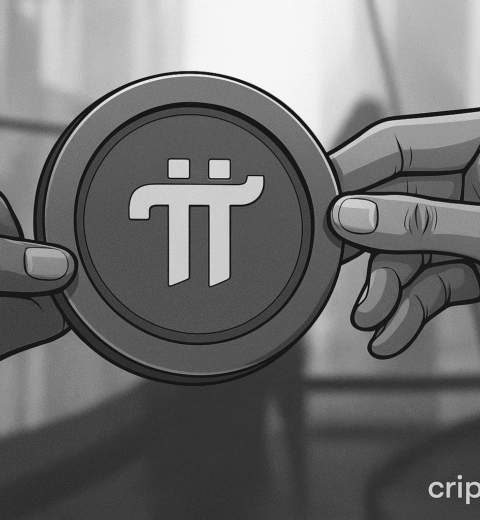What Is the Rise of Stablecoins?
The rise of stablecoins is like watching digital money grow up. From being a quiet innovation in the crypto world to becoming a major financial tool in the U.S., stablecoins are now making headlines. Unlike Bitcoin or Ethereum, which swing like a rollercoaster, stablecoins are designed to stay stable—usually tied to the U.S. dollar. Think of them as crypto with a seatbelt.
“The rise of stablecoins is the bridge between decentralized finance and real-world usability.” – @cryptolawyer (X Post)
🔗 Source
The rise of stablecoins is happening fast, and if you’re not paying attention, you might miss one of the biggest financial shifts in modern times.
Why Are Stablecoins So Popular in the US?
The U.S. is seeing an increasing number of people using stablecoins—especially USDC, USDT, and DAI—because they solve real problems. Traditional banking has limits like high fees, slow transfers, and lack of 24/7 access. Stablecoins fix these by offering instant, borderless, and low-cost transactions.
Use Case Comparison
| Feature | Traditional Banking | Crypto (BTC/ETH) | Stablecoins |
|---|---|---|---|
| Speed | 1-3 days | 5-30 minutes | Under 1 minute |
| Fees | High (SWIFT, Wire) | Medium to high | Low to zero |
| Value Stability | High | Low | High |
| Availability | Business hours only | 24/7 | 24/7 |
| Ideal For | Salary, Bills | Investment | Payments, Savings |
Top Stablecoins to Watch in 2025
The rise of stablecoins isn’t led by just one coin—many are racing to be the digital dollar of the future. Here are the big names in the U.S. market:
USDC (USD Coin)
- Issuer: Circle
- Peg: 1:1 to USD
- Regulation: Transparent and regularly audited
- Use Case: Business payments, DeFi, remittances
✅ Review: “USDC feels like the most trustworthy stablecoin out there. I use it for payroll and never had a problem.” – Sarah, Small Business Owner (California)
USDT (Tether)
- Issuer: Tether Limited
- Peg: 1:1 to USD
- Controversy: Some doubts about reserves
- Popularity: Most used globally
❗ Review: “It’s fast and accepted everywhere, but I wish Tether were more open about their reserves.” – Mike, Crypto Trader (New York)
DAI (Decentralized Stablecoin)
- Issuer: MakerDAO
- Peg: 1:1 to USD
- Decentralized: Backed by crypto collateral
- Use Case: Ideal for DeFi projects
Real-Life Stories: How Americans Are Using Stablecoins
Let’s get real. The rise of stablecoins is not just charts and tech—it’s about people.
Priya’s Online Shop in Austin
Priya runs an Etsy-style online shop and accepts USDC. “No credit card fees, no delays. Customers love it, and I save money,” she says. Her store has seen a 20% rise in international orders thanks to stablecoins.
Jayden, a College Student in Seattle
Jayden uses DAI to earn yield on Aave. “My savings earn more in DeFi than my bank ever gave me. It’s safer than gambling with altcoins.”
🎥 Watch this short video to learn how small businesses are using stablecoins in the US:
🔗 YouTube: Stablecoin Payments Explained (2025)
Regulation & Compliance: The Legal Side of Stablecoins
Here’s where the rise of stablecoins gets interesting—and complicated.
In the U.S.
The STABLE Act is gaining momentum. It wants stablecoin issuers to:
- Hold 1:1 reserves
- Get FDIC insurance
- Operate like banks
Some say this protects users. Others worry it kills innovation.
Globally
| Region | Regulation Name | Key Requirement |
|---|---|---|
| U.S. | STABLE Act | 1:1 Reserves + Bank Licensing |
| EU | MiCA | Stress Testing + Liquidity Control |
| Hong Kong | Stablecoin Bill | Monthly Audits + Transparency |
“We want to make Hong Kong a global hub for stablecoins.” – HK FinTech Association
🔗 X Source
Benefits and Use Cases of Stablecoins
The rise of stablecoins is not hype. It’s practical.
Key Benefits:
- Stability: Avoids crazy crypto price swings
- Speed: Transactions in seconds
- Security: Transparent and auditable (for trusted coins)
- Access: No bank? No problem. Just need a wallet.
Use Cases:
| Use Case | Example |
|---|---|
| Remittances | Sending USDT from the U.S. to Mexico instantly |
| DeFi | Earning 10% APY on Aave with USDC |
| Payments | Online stores accepting DAI instead of PayPal |
| Savings | Holding stablecoins as a hedge against inflation |
| NFT Markets | Using stablecoins to buy/sell NFTs on Solana or Ethereum |
Risks & Challenges in the Stablecoin World
The rise of stablecoins also comes with risks.
Reserve Transparency
Not all stablecoins are equal. Some issuers aren’t open about their reserves. This could lead to crashes if people lose trust.
“Tether’s reserve mystery could cause panic one day.” – Financial Times (March 2025)
Sanctions and Illicit Use
Stablecoins are also being watched for possible use in money laundering and sanctions evasion. The U.S. Treasury recently flagged some USDT wallets.
Overregulation
Too many rules too quickly could push stablecoin innovation out of the U.S. to crypto-friendly zones like Dubai or Singapore.
Reviews: What Experts & Users Are Saying
🗣️ “The rise of stablecoins is the biggest thing in crypto since Ethereum.” – Vitalik Buterin
🔗 X Source
🗣️ “Circle’s transparency is why we chose USDC for payroll.” – Alex, CTO of a San Francisco Startup
🗣️ “Stablecoins saved me $300 a month in wire fees.” – Maria, Freelancer from Miami
🗣️ “Regulators must balance innovation and safety.” – Senator Cynthia Lummis
🔗 YouTube
What’s Next for the Rise of Stablecoins?
With more than $210 billion in market cap, stablecoins could hit $400 billion by the end of 2025 if regulatory clarity improves.
Expert Predictions:
| Expert | Prediction |
|---|---|
| Bloomberg Analysts | Stablecoins to rival PayPal in daily volume by 2026 |
| ARK Invest | USDC and USDT to dominate DeFi and CBDC integration |
| Coinbase CEO | Regulation will favor well-audited coins like USDC |
Stablecoins are already powering gaming, NFTs, and even international trade. We’re moving toward a future where you might pay rent, shop at Walmart, or even file taxes using stablecoins.
Summary: Should You Get Involved?
The rise of stablecoins is no longer an experiment. It’s real. Whether you’re a student, business owner, freelancer, or investor, stablecoins offer:
- Fast, cheap, borderless transactions
- More control over your money
- Opportunities to earn yield safely
- A stable bridge into crypto
But remember—stick to trusted names like USDC or DAI, stay updated with regulatory news, and don’t lock all your funds in high-risk yield farms.
FAQs:
What is a stablecoin?
A stablecoin is a type of cryptocurrency that’s pegged to a stable asset like the U.S. dollar. It’s designed to avoid the price swings you see in coins like Bitcoin or Ethereum. Stablecoins like USDC and USDT allow users to make fast, cheap, and stable transactions.
Why is the rise of stablecoins important in 2025?
In 2025, the rise of stablecoins is transforming how Americans handle money. With better regulation, increased trust, and more adoption, stablecoins are becoming essential for payments, savings, and DeFi use cases—offering stability in a volatile market.
Are stablecoins legal in the U.S.?
Yes, but they’re under increasing regulation. Laws like the STABLE Act are being discussed to ensure stablecoins are backed 1:1 with U.S. dollars and managed by regulated entities. It’s legal, but evolving.
What are the risks of using stablecoins?
The biggest risks are regulatory changes, lack of transparency (like Tether’s reserves), and possible hacks in DeFi platforms. Always use trusted coins and secure wallets, and keep an eye on legal updates.
Can I earn passive income with stablecoins?
Yes! You can earn 4–12% APY by lending stablecoins on platforms like Aave, Curve, or Compound. But always check the platform’s safety, audits, and insurance before investing.




